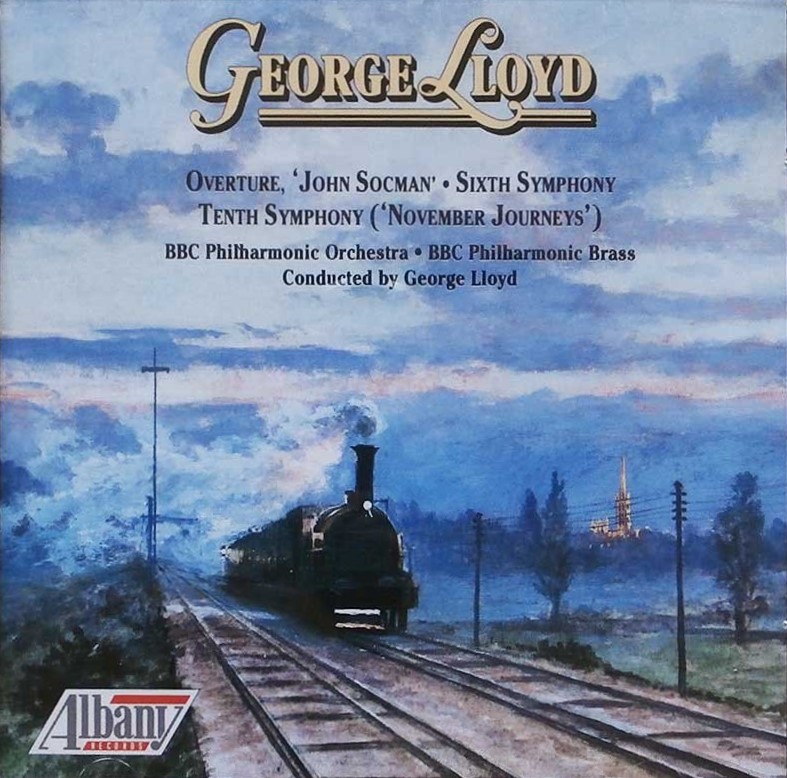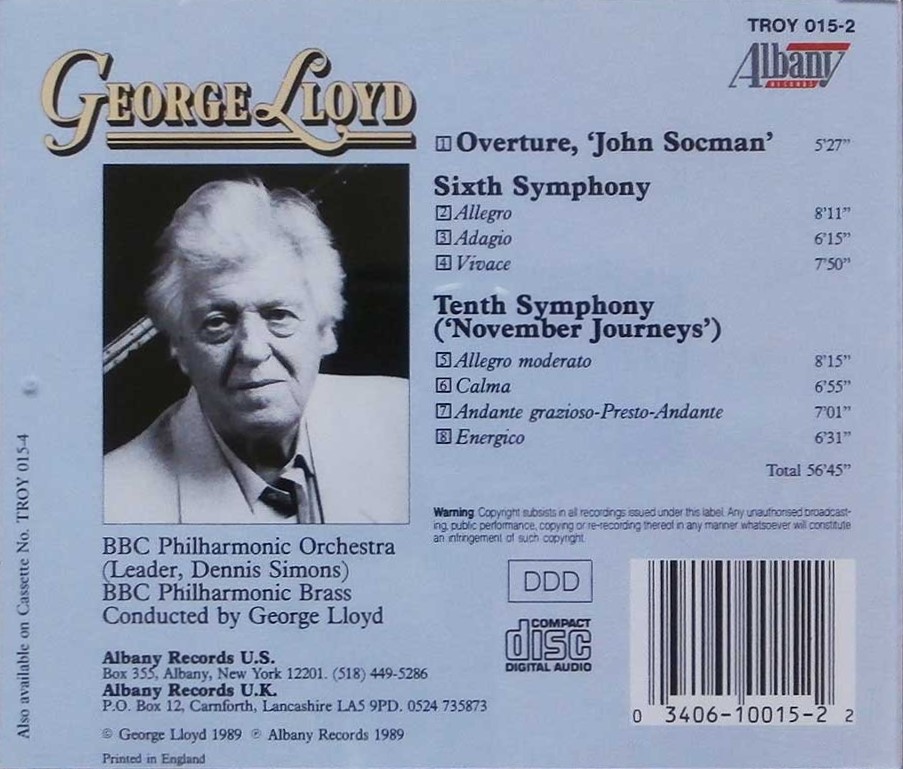If George Lloyd's Symphony no. 4 (BLOG) is the first feast of the composer's symphonic output, Symphony no. 5 is the real deal.
The Fifth Symphony is nearly an hour long, so it follows in the vein of the Fourth, at least as far as length goes. Lloyd also names the movements, of which there are five, both attributes uncommon for the composer, as far as I remember. The titles are more descriptive of the type of music rather than anything programmatic, so nothing ground breaking in the change.
I love the first movement from its very first notes. There is just something about the way Lloyd treats the winds and combines them into various colors. The feature of the winds gives this movement a rather pastoral setting too, only interrupted by some Romantic sweep from the strings.
The second movement is an odd one, opening with chanting unison winds in a rather archaic fashion, a feeling continued by a series of brass and wind chorales. Only a moving bass line and some percussion hits interrupt the solemn mood, which eventually evolves into a slow march. This might be the most inventive movement I have heard from the composer thus far.
The liner notes mention the odd configurations of instrumentation in these early movements, and I sense it the most in the second.
The light third movement is a nice break from the precedings, reminding me of the filigree setting from the John Socman Overture. The celesta is a tad dry and subdued in sound, yet its incorporation adds such color, and the pert waltz feel is rather characterful.
The fourth movement lament is more powerful than it is mournful, at least for this listener. I think it is the background of horns which whip up portents of menace, and maybe too, the odd clarinet musings among the pulsating, forward-moving underlay.
It wouldn't be George Lloyd if his sunny Symphony no. 5 didn't get a big, joyful sendoff. To my ears, this movement sounds more like a Scherzo than a brass-busting finale, although we get that at the end too. Still, there is a fair bit more scurrying than pompous theatrics. The presence of a snare drum, perhaps a side drum if I am incorrect, creates an interesting intrusion, but is more an accent than anything durable. Everything comes together at the end for a glorious conclusion.
Really, the only problem with Lloyd's Symphony no. 6 is that it follows in the well-marked tread of its predecessors. This work is smaller in stature and thus doesn't announce its presence quite as boldly, nor with as much alarum, as the Fourth and Fifth symphonies.
The Sixth contains a perky opening, where I especially enjoy the bouncy walking bass line. In the slower middle movement, the main melody reminds me of John Williams at the outset, even if Lloyd goes in different and more developed directions.
The 'plucky' third movement is pretty lightweight, where its wild flutings are characterful. There still exists a Romantic sweep amongst the strings and brass, but it is the winds which cheer up the movement at each turn. As I mentioned earlier, it is only the relatively small stakes which make this symphony lay in the shadows of its larger brethren. Still rather enjoyable all the same, and Lloyd eagerly keeps up the positive musical moods he is so well known for.
As with all of Lloyd's conducting, he elicits a fine response from the BBC Philharmonic. For those looking at this performance, or the one from Sir Edward Downes with the Philharmonia, I don't think there is anything particularly distinguishing betwixt the two recordings. Either are great to explore this music!
Works
Symphony 5 (56.24)
Symphony 6 (22.19)
Performers
BBC Philharmonic Orchestra
George Lloyd, conductor
Label: Albany
Year: 1988-92
Find more Lloyd recordings HERE!





No comments:
Post a Comment